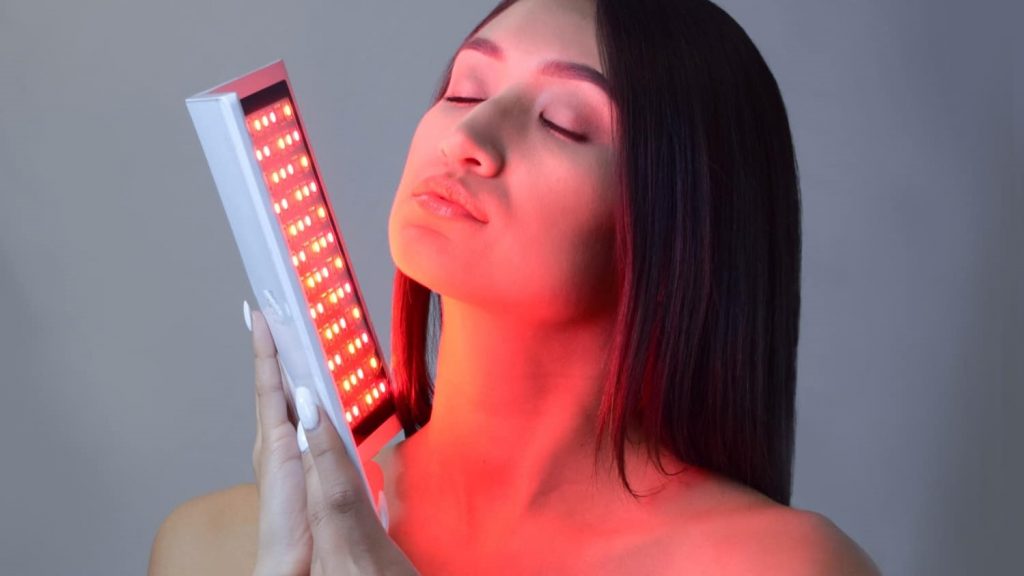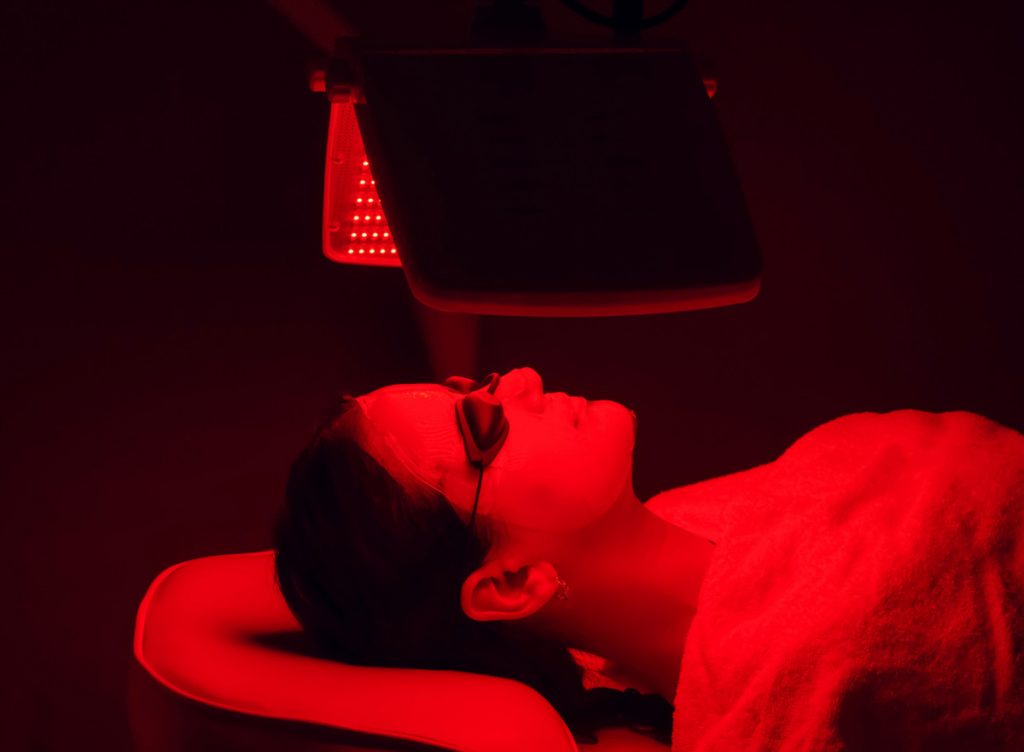Are you interested in learning more about red light therapy, more specifically, how does light therapy work?
Red light therapy is a type of therapy that aims to help heal wounds, acne, skin, muscle tissue, and other parts of the body. Even though red light is similar to infrared light, there is still a difference in how both lights work.
In the following text, we will see how red light therapy works and what are the advantages of this type of therapy.

Source: emvwrites.com
How Does Red Light Therapy Work?
You probably wonder how red light therapy works and how it differs from laser therapy. Red light therapy acts at the cellular level, specifically the mitochondria. Mitochondria are known as energy carriers because they are responsible for ATP (adenosine triphosphate).
Using red light therapy stimulates the production of ATP, which is essential for cell function. Increased energy plays a role in rejuvenating cells and protecting them from damage.
What is the difference between red light therapy and laser therapy? The difference is that laser therapy does control damage to the skin.
This is not the case with red light therapy. This light only stimulates the cells to produce energy and does not cause damage to the skin.
Where Can It Be Used?
Although there are still clinical trials about the potential of red light therapy, this type of therapy can help with many health conditions.
Therefore, red light therapy can be used in dental, skin, and inflammatory diseases.
Dental pain
Dental professionals use this treatment to help reduce pain in patients and fight inflammation and bacteria.
Temporomandibular joint pain- this pain is characterized by cracking of the jaw joint when the lower jaw moves. In some studies, red light therapy has been shown to be effective in reducing such symptoms.
Periodontitis- is a condition where bacteria accumulate in the neck of the tooth, which can cause the tooth to loosen and fall out. RLT therapy may help treat such conditions.
Stomatitis: Red light therapy can be used in Minor recurrent aphthous stomatitis. This condition is characterized by inflammation of the lips, soft palate, and cheek walls.
In a 2020 study, this treatment helped reduce pain in children aged 5-12.
Skin conditions
This type of therapy is a popular option when it comes to skin conditions. In this regard, red light therapy can help treat scars, wrinkles, acne, and redness. This is probably due to the therapy that works to produce collagen and increase circulation.
RLT also helps with the following:
Anti-aging: due to the red light, which stimulates the cells to secrete collagen protein, this treatment might help slow down the aging process.
Hair growth: red light therapy can help reduce hair loss in men and women. Although there are still trials, this type of therapy might show promising results.
Wound Healing: red light therapy may help heal damaged skin faster by stimulating skin growth and improving circulation regarding wounds.
Many people use the chemical peel process to improve their skin conditions. But can you use red light therapy after a chemical peel? you can find out if you can combine both treatments to make your skin better.
Inflammation
Red light can help reduce inflammation by acting on cells to produce antioxidants that fight inflammation. This non-invasive therapy can help increase circulation and help with many conditions. Let’s see some of them.
Tendinitis: this therapy can help the muscles heal after strenuous training. Also, pre-workout red light therapy can help improve athletic performance.
Psoriasis: red light therapy can be used for psoriasis. Usually, such therapies are used in combination with different lights to be effective.
Carpal tunnel syndrome: positive effects of this type of therapy were observed in a particular study. Namely, red light therapy helped reduce the pain in the hands in this syndrome. An improvement in the electrical activity of the median nerve was also observed.

Source: slumberandsmile.com
Benefits and Adverse Effects of Red Light Therapy
When deciding on this type of therapy, pay attention to the pros and cons. Red light therapy, although proven effective, may not work for everyone.
Benefits
Unlike laser therapy, this treatment is non-invasive, non-toxic, and doesn’t harm the skin. There is no need to worry about light safety, as this treatment is different from ultraviolet light. In contrast, ultraviolet light can cause skin cancer. Hence the reason why many turn to red light therapy as the better alternative.
In addition, this type of therapy is available in dental clinics, beauty clinics, baths, and solariums. Also, there are many consumer-loved RLT at-home devices. From handheld devices and led masks to red light therapy beds, the options are nearly endless.
Cons of red light therapy
Although no adverse effects have been reported from this therapy, you should still be careful when using it.
Keep in mind that this type of therapy does not work for everyone. In addition, the results for some may be visible for a short time, while for some, they may be visible for a more extended period.
If you buy a full-body red light therapy device, keep in mind that such an appliance does not have the same power as professional appliances, and each device comes with clear instructions that detail the usage process.
But remember- you need to use the at-home device consistently to see visible results. However, some of you may not get the results you want from an at-home device, and you might need to visit an experienced red light therapy professional.
Last but not least, not everyone will benefit from red light therapy. People with diabetes, lupus erythematosus, photosensitive eczema, and albinism are not allowed to use red light therapy in any form. The same applies to pregnant women, women who plan on becoming pregnant, and breastfeeding women.
Conclusion
Finally, we can say that red light therapy is a promising treatment that has proven effective in many health conditions. Although the full potential of such therapy is still being investigated, its use so far has proven to be positive.
In addition, it is a non-invasive method that does not adversely affect the skin. Unlike other types of light treatments, red light therapy does not burn the skin.
It also stimulates the cells, which helps solve problems related to the skin, inflammation, and many others. Finally, we hope we have helped you understand how does red light therapy work and the benefits of such therapy.

Hello! I’m Nicky Rodgers.
Almost a decade ago, I got excited about the idea of employing alternative methods like red light therapy to create a healthier life.
To learn more about it, I did my Certified Light Therapist course from Photonic Therapy Institute and started looking into the intricacies of how light therapy influences several bodily processes. Before I knew it, my interest had become an obsession which resulted in this extensive blog.
Here, I offer countless well-researched articles to help you understand the benefits and uses of light therapy. I hope this information gives you a head start in your wellness journey.
